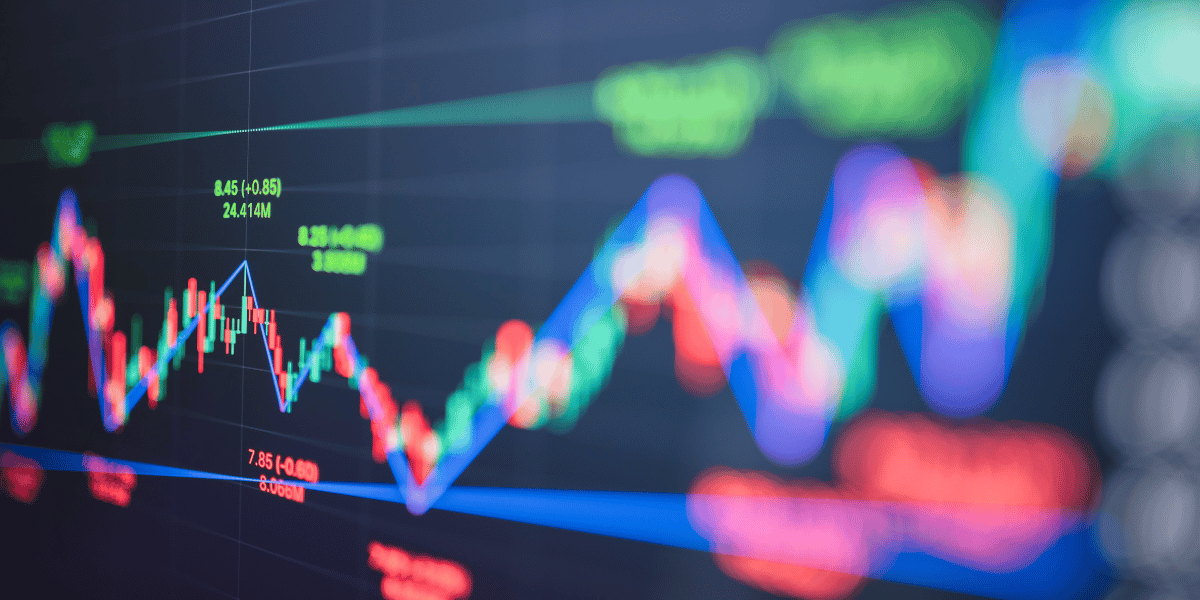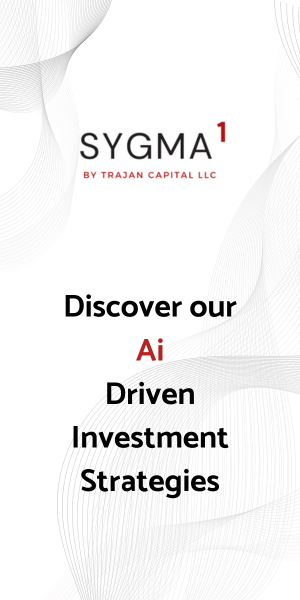Navigating Market Trends with Precision: The Role of CFDs instruments in Algorithmic Trading

In the ever-evolving landscape of financial markets, algorithmic trading has marked a revolutionary step forward, offering precision, speed, and efficiency far beyond traditional trading methodologies. At the forefront of this revolution are Contracts for Difference (CFDs), a versatile instrument that has significantly altered the approach to trading strategies. Unlike traditional margin trading or long-term portfolio management, where investors buy stocks at full value and hold for extended periods, CFDs offer the unique advantage of being able to profit from both rising and falling market prices. Moreover, they allow traders to adjust their market exposure more swiftly and with greater precision.
CFDs vs. Traditional Margin Trading: Flexibility and Market Access
When comparing Contracts for Difference (CFDs) to traditional margin trading, two key advantages come to the forefront: unparalleled flexibility and broader market access. These aspects are crucial for the implementation of dynamic algorithmic trading strategies, providing a competitive edge in today’s fast-paced financial markets.
Unmatched Flexibility
CFDs offer a level of operational flexibility that is unmatched by traditional margin trading. With CFDs, traders can go long or short with equal ease, enabling them to profit from both rising and falling markets. This flexibility is particularly beneficial in algorithmic trading, where strategies often rely on the ability to quickly pivot in response to market signals.
Example: Consider an algorithmic trader who anticipates a decline in the technology sector based on their predictive model. With traditional margin trading, shorting stocks can be cumbersome, involving borrowing stocks, facing potential buy-in risks, and dealing with limitations on short selling. In contrast, CFD trading allows the trader to short sell the sector with a simple click, without the need to borrow shares or navigate through complex regulatory hurdles.
Broader Market Access
CFDs also offer broader market access compared to traditional margin trading. Traders can access a wide range of markets from a single platform, including international markets, commodities, indices, and forex, without the need to navigate multiple accounts or deal with various regulatory environments. This comprehensive market access enables algorithmic traders to diversify their strategies across different asset classes and geographies, optimizing their risk-reward profile.
Example: An algorithmic trading firm seeks to diversify its strategies to include commodities alongside equities. With traditional trading, this would require setting up new brokerage arrangements and potentially dealing with different margin requirements and regulations. CFD trading, however, allows the firm to seamlessly add commodities to its trading portfolio through the same platform used for equities, streamlining the process and enabling more efficient capital utilization.
Leverage with Precision
Another aspect where CFDs stand out is in their use of leverage. Unlike traditional margin trading, where leverage options can be restrictive and tied to specific regulations, CFD trading offers more flexible leverage options. This allows traders to tailor their leverage use to their risk appetite and strategy requirements, optimizing their capital efficiency.
Example: A trader using an algorithmic model focuses on high-frequency trading strategies that require leveraging positions for short durations. In traditional margin trading, the fixed leverage ratios could limit their ability to execute these strategies effectively. CFDs, however, provide the flexibility to adjust leverage on a per-trade basis, enabling the trader to apply different leverage levels based on the specific strategy and market conditions, thus enhancing performance potential while managing risk.
Advantages of Neural Network AI for Trading CFD Instruments
Contracts for Difference (CFDs) represent a significant segment of the financial market, offering traders and investors the flexibility to speculate on price movements without owning the underlying asset. This unique financial instrument has become increasingly popular, especially in the context of AI-driven trading strategies, due to the vast amount of data it generates and the continuous trading opportunities it presents. Neural Network AI, with its superior data processing and predictive capabilities, stands at the forefront of exploiting these advantages, transforming CFD trading into a more efficient and profitable endeavor.
Unpacking the Data Advantage
CFDs, by their nature, provide a rich dataset for analysis. Each contract reflects the price movements of the underlying asset, whether it’s a stock, commodity, currency pair, or index, offering a detailed view of market dynamics. Unlike traditional securities, CFDs encapsulate additional dimensions of market behavior, including leverage effects and short-selling opportunities. This wealth of data becomes a fertile ground for Neural Network AI, which thrives on high-dimensional datasets.
By harnessing deep learning algorithms, AI systems can analyze patterns across multiple time frames and conditions, uncovering insights that would be challenging, if not impossible, for human traders to detect. For instance, subtle correlations between market indicators or the predictive power of specific price movements can be identified and utilized for trading strategies. This comprehensive analysis enables AI-driven CFD trading platforms to anticipate market trends with a high degree of accuracy, providing a significant edge over traditional trading approaches.
Leveraging 24/5 Market Access
Another intrinsic advantage of CFD trading is the market’s operation 24 hours a day, five days a week. This continuous trading window is particularly beneficial for Neural Network AI systems, which can monitor and analyze market conditions in real-time, reacting instantaneously to price movements and news events. The ability to trade around the clock, in response to global market developments, allows for the maximization of trading opportunities and the minimization of risks, as the system can adjust its strategies based on live data, even when major markets are closed.
The 24/5 nature of the CFD market also enhances risk management capabilities. AI systems can deploy strategies that require constant market access, such as stop-loss orders and automated hedging techniques, to protect against unexpected market movements. This continuous oversight ensures that positions are managed proactively, significantly reducing the potential for large, unforeseen losses.
Case Studies of AI-driven CFD Trading Successes
Real-world applications of Neural Network AI in CFD trading have demonstrated its transformative potential. For example, AI-driven platforms have successfully predicted market downturns and rallies by analyzing the interplay between CFD data and external economic indicators, allowing traders to adjust their positions ahead of significant market movements. Additionally, by employing sophisticated risk management algorithms, these platforms have navigated volatile market conditions, securing profits while mitigating losses.
One notable case involved an AI system that identified a profitable trading opportunity in a commodity CFD by analyzing trends in related currency pairs and global economic news. By executing trades based on these insights, the system capitalized on market movements that were overlooked by human traders, showcasing the power of integrating deep learning with CFD trading.
Superior Risk Management through CFD Trading
Risk management is a critical aspect of any trading strategy, more so in the volatile world of CFDs. Here, CFDs offer strategic advantages by allowing for the use of leverage not as a means to magnify performance, but as a tool for managing risk and achieving lower margins. The capability to make quick and precise adjustments in exposure, a feature uniquely suited to algorithmic trading, further enhances risk management. This contrasts sharply with traditional trading, where adjustments to positions can be cumbersome and slow, potentially leading to missed opportunities or heightened risk exposure.
Performance Optimization: Capturing Market Trends
CFDs enable traders to capitalize on both upward and downward market trends, a flexibility not readily available in traditional long-term investments. Algorithmic trading strategies, powered by real-time data analysis, can leverage this advantage to optimize performance. The immediate access to global markets and the ability to swiftly adjust positions based on algorithmic predictions enhance the responsiveness and effectiveness of trading strategies.
The Strategic Use of Leverage and Precision in Exposure Adjustment
The strategic use of leverage is where CFD trading distinctly diverges from traditional margin trading. In CFD trading, leverage is employed judiciously to manage risk and margin requirements, rather than to simply amplify returns. This approach allows for finer control over investment exposure and enables traders to adapt more quickly to market changes, an agility that is paramount in the fast-paced trading environment.
Navigating the Complexities of CFD Trading: The Role of Expertise and AI
Despite the clear advantages of CFDs for algorithmic trading, the complexity of these instruments and the markets in which they operate cannot be understated. Successful CFD trading requires not only a deep understanding of market dynamics but also the ability to manage the risks associated with leverage and rapid market movements. Here, the expertise of seasoned professionals, bolstered by sophisticated AI and machine learning algorithms, becomes indispensable.
AI-driven programs excel in analyzing the vast datasets generated by CFD markets, offering predictive insights and facilitating real-time decision-making. This combination of professional expertise and technological prowess enables traders to manage risk more effectively, adapt strategies promptly, and consistently generate returns, regardless of market conditions.

